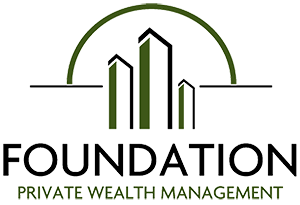Fixed Income Gains in 2010
Submitted by Foundation Private Wealth Management on November 2nd, 2010Over the last several months, as we have been meeting for our client reviews, we have been highlighting the gains that we have been generating in the fixed income portion of your mutual fund portfolios. To many, it might actually seem counterintuitive to have 6% to 8% returns in fixed income position when yields, at least on the government bond portion of the portfolios, are at all time lows. I would like to explain the reasoning behind this performance a little further and provide a brief update on what we can expect going forward.
There are two primary reasons that the exceptional returns in the fixed income positions have been generated. Firstly, the bond fund managers have been maximizing the returns in their portfolios by picking higher yielding, quality corporate debt (which will yield more than Canadian and US government debt). As debt markets have now stabilized since the financial crisis in 2008, bond yields have dropped and bond prices have risen as a result, which translates to increased performance. However the second, and perhaps most important factor, has been the widespread movement by the central banks of many developed countries to stimulate their economies coming out of what has been coined the “Great Recession” of 2008.
Before I explain how this stimulus has generated positive returns, I would like to give some background on the role of central banks and how they create stimulus. Central banks are responsible for maintaining monetary policy within their countries. One of the main tools they have is to increase or decrease short term interest rates. In Canada, this is the Bank of Canada Overnight Rate and in the US it is the Fed Funds Rate. These two interest rates are very important for the economy as they set the short term lending rates that banks charge. By lowering this interest rate, the central bank is stimulating the economy by making credit easier to access. Conversely, increasing this rate tightens the economy by reducing the availability of credit. In the US, the Fed Funds Rate is currently sitting at 0.25%. This leaves the central bank with little room, if none, to decrease interest rates any further, thus limiting their ability to further stimulate the economy. However, the Federal Reserve does have a couple more tools in the toolbox that can help stimulate the US economy. One of these tools, which is the buzz word of business media these days, is quantitative easing (QE).
Quantitative easing, which many of you have heard me explain in our meetings, is essentially the process by which a central bank creates money to buy primarily their own government debt in the market. This increases the money supply, making it easier to access money, which in turn creates inflation. More importantly, for bonds, it causes the price of bonds to increase and the yield to decrease. This is one of the main reasons we have seen the gains in our fixed income portfolios. Although this has obviously had a positive effect over the short term, it’s difficult to determine what the fallout from the QE process will be over the longer term as we have never seen economic stimulus of this magnitude before.
On Wednesday, November 3 the US is expected to announce its second round of quantitative easing, now termed QE2 by the media, and both the bond and equity markets have rallied in expectation.
We thought it would be great to share with you an article from Bill Gross of PIMCO that further details the QE process and its implications on investment decisions moving forward. To read the Bill Gross article please follow the link below.
As a general commentary, we do agree with what the US and other governments are doing, however, this will necessitate an active strategy to the management of bonds as the easy money that has been made over the last 30 years in the fixed income market has likely come to an end.


Comments
Post new comment